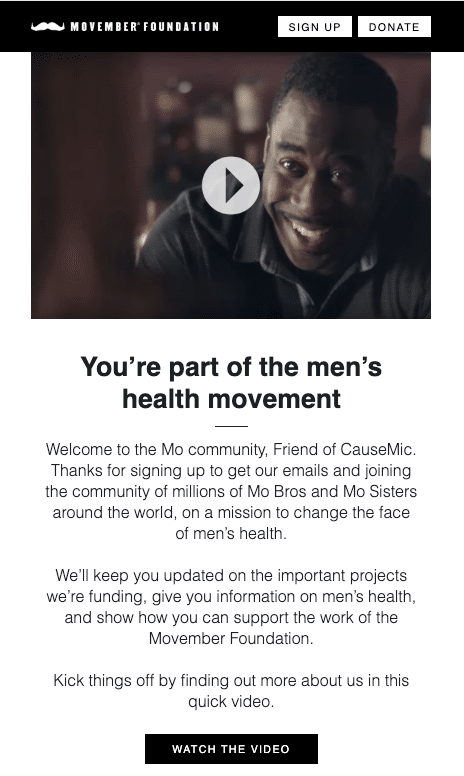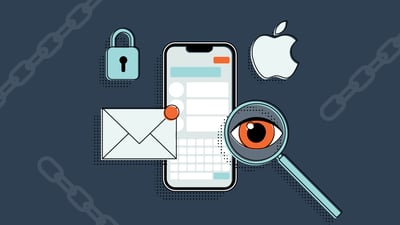5 Ways Nonprofits Can Improve Email Deliverability

Your inbox is a bustling marketplace. If you work in a “typical” office role, you receive an average of 121 emails each day and spend about 28 percent of your work day reading and answering emails.
If you’re a Gmail user, how often do you peruse the promotions tab within the platform’s default inbox setting? What about your spam folders? Per Statista, spam messages accounted for 56 percent of email traffic in March of 2019 while 21 percent of opt-in emails never make it to the inbox. ISP (Internet service providers) filters are spearheading the war on junk mail.
We’ll make an assumption you’re a trustworthy nonprofit professional eager to learn how your organization can increase the deliverability of your emails to those who care about your mission, all while spammers have impacted your ability to get in front of your audience. Below are some tactics to achieve this, but it’s worth noting you’ve got some competition when it comes to delivering value to your supporters via email as well.
As you take steps to increase deliverability, learn about your audience’s preferences in relation to your nonprofit and communicate impact in creative, compelling ways.
Back to nerding out about email deliverability, AKA ensuring your message arrives in your recipient’s inbox as intended. Here’s our top five recommendations:
1. Build Credibility
ISPs assess the trustworthiness of incoming emails based on the IP, short for internet protocol. IP is the method by which data is sent from one computer to another via the Internet. Each computer (also referred to as a host) has at least one IP address that uniquely identifies it from all other computers on the Internet. So how can you build IP credibility?
Send a small batch of emails to your most engaged segment first. These are the individuals who are most likely to open and engage with the content, therefore, increasing credibility. Then, send to the rest of your segments who may be less engaged historically, but will more likely receive the email in their primary inbox increasing the likelihood they will open and click through. We’d also recommend suppressing your inactive subscribers - this could be defined as someone who hasn’t opened your emails in the last year. Focusing on your email list’s strengths will increase engagement and credibility.
Check your sending reputation utilizing tools such as senderscore.org. The higher your score (calculated on a rolling 30-day average), the better your reputation. A higher volume of complaints - “junk” or “spam” tags from recipients - will impact your score, which can be avoided with relevant, quality content. *Disclaimer: scoring your reputation is helpful, but it’s not an authoritative metric when it comes to evaluating the health of your entire email program. It’s one glimpse at a larger picture.
Practice list hygiene. Emails will bounce back when an account is no longer active (hard bounce) or a mailbox is temporarily full or the recipient is out of office (soft bounce). When there’s a lot of bouncing back, it appears your audience is not very engaged and that you’re not keeping up with your email list hygiene by removing inactive accounts. So remove emails that return with a hard bounce in a timely manner.
2. Refine Your Opt-in and Opt-out Processes
Opting in: Utilizing the double or confirm opt-in helps your organization collect emails safely while you grow your list. It requires the recipient to take an extra confirmation step that verifies their email address and desire to subscribe. Confirmed opt-ins are typically associated with higher quality leads, higher open rates, and more engagement. A single opt-in or pre-checked box can sometimes generate spam complaints, which punch your deliverability rate right in the gut.
Opting out: In addition to making it easy to opt-in to receive your organization’s emails, it’s also important to ensure that the unsubscription process is simplified. Not only is it required by law that you must allow users to opt-out at any time (hey, now’s a good time to review the CAN-SPAM Act), when you complicate the option to do so, it increases the likelihood that your recipient will mark the email as spam. And well, there’s another knock on your organization’s IP credibility.
Host a preference center: Consider allowing your subscribers to choose how much or what kinds of emails they’d like to receive from your organization. Several ESPs (email service providers) offer this option, and you’d want to ensure you honor those preferences.
3. Implement an Automated Welcome Series
A new lead is engaged and intrigued to learn more about your mission. Take the opportunity to explain your value proposition immediately after they opt-in by developing an engaging welcome series. The average open rate for a welcome email is 60 percent, so take this opportunity to start the relationship off right and increase your email deliverability.
 Movember immediately welcomes new subscribers to their organization with clear calls to action for getting involved.
Movember immediately welcomes new subscribers to their organization with clear calls to action for getting involved.
4. Aim for Consistency
Send a consistent volume of email to your audience. High-volume senders, especially if not sent consistently, are a red flag. Some campaigns, such as year-end fundraising, will likely require a higher volume of emails; however, if your organization is all over the map with outbound emails, you could find yourself filtered out of primary inboxes.
Don’t overdo it. Email fatigue is real. And if 99 percent of emails are solicitations for money, it can fall on deaf ears or worse yet, end up flagged for spam by an unhappy recipient. If you’re sending more than eight emails to the same individual in a month, you’re taking the wrong approach.
Don’t go silent. When you send too infrequently, you’re out of sight and out of mind. You can test the optimal frequency by trying different approaches with key segments over the course of a couple months and evaluating open, click-through, and engagement rates.
5. Send Good Emails
Seems obvious, doesn’t it? Your organization’s content should be relevant, compelling, and in alignment with your brand (let’s not forget mobile-friendly). There’s no such thing as one email fits all, and personalization will increase relevance and engagement. Did you know open rates increase by 17 percent when the subject line is personalized?
Test, evaluate, and optimize. You can learn a lot about your audience’s preferences based on behavior, like this experiment from NextAfter which explored clarity in email subject lines for the nonprofit Care Net.
And while many nonprofit marketing teams are an army of one, take the time to define at least 3-5 segments. Here’s one example of how an organization could segment their audience:
-
- Active supporters (have not yet donated but opened an email within the last year)
- Donors who’ve made a gift of $1-$1,000 within the last 12 months
- Donors who’ve made a gift of more than $1,000 within the last 12 months
- Active monthly donors (any amount)
- Active fundraisers (any amount)
- Inactive, defined as they haven’t opened an email in 12 months. Reach out to these individuals sparingly. Examples being a deliberate reactivation effort or during emergencies like a large scale disaster.
We’ll summarize with this - email isn’t the only channel to drive revenue and engagement for your nonprofit, but it’s the most commonly leveraged channel for good reason - we’re all very glued to our inbox and it's responsible for driving nearly 30 percent of all donations. Take these recommendations and optimize where you can to drive results for your mission, and don’t be afraid to enlist the support of a tech-savvy colleague or consultant.





